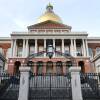Hillary Clinton can consider her convention a modest success. Gallup reported this week that 45 percent of Americans said they were more likely to vote for her, compared to 41 percent who said less likely.
Historically, that's not a terribly impressive number. But if you compare that to Donald Trump's convention, Clinton and her friends in Philadelphia last week did phenomenally well. Just 36 percent of Americans said the Republican convention made them more likely to vote for Trump, compared to 51 percent who said less likely.
That makes this year's Republican convention the least effective out of the 16 conventions that Gallup has measured since the 1980s.
Thus far, it sure looks like the Democratic convention has boosted Clinton, just as the Republican convention boosted Trump. So will it boost her more? We looked at those Gallup convention opinion figures, matching them up with Gallup's measures of past convention poll bounces. We added in Clinton's and Trump's median post-convention poll bounces from four surveys taken before and after both conventions.
(Aside: That dot wayyyy out there to the top and to the right? That's Bill Clinton, 1992, when he gained 16 percentage points against George H.W. Bush after the Democratic convention. We're including a table of past convention bounces and net convention opinions at the bottom of this post, if you want to know exactly whose dot is whose.)
There has been a positive — but by no means perfect — relationship between how well-received a convention was and how big a candidate's bounce was afterward. And this suggests yet another way this election is unusual: despite having the worst-received convention by far of all the conventions that Gallup has measured, Trump still got a positive bounce. His dot falls a bit outside the general trend.
But — and this is a huge but — how you measure this bounce makes a big difference. Gallup measures the bounce only by how much a candidate's own poll number went up. That is, Clinton had 45 percent support before the convention and 52 percent after in the CNN poll, which would be a 7-point bounce the way that Gallup is counting. But when you add in how much Trump lost during the DNC — how much the gap between them changed — she gained 12 points.
By that measure, Clinton, with the better-received convention, seems to have received a sizably bigger boost from her party's convention, as FiveThirtyEight and political data blogger Sam Wang have noted. The median of the four polls we used comes to a 3.5-point jump for Trump, versus 7 points for Clinton.
Trump's decline is a big part of Clinton's post-convention boost. In fact, pollster Charles Franklin pointed out this week that the DNC marks not only the start of an uptick in Clinton's favorability but the start of a slide in Trump's.
So does it matter? That depends on how you look at it. On the one hand, it's still 98 days until Election Day. And past polling averages haven't settled in closer to the final result until around 70 days out, as the New York Times' Josh Katz and Kevin Quealy reported earlier this year. And a good bounce doesn't necessarily mean a win in November. Just ask Michael Dukakis, who had a net-35-point positive response to his 1988 convention (and who gained 7 points afterward) but went on to lose to George H.W. Bush.
However, the four-day-long advertisements are remarkably good at setting the stage for November, as David Leonhardt wrote in the New York Times this year: "Since at least 1952, no presidential candidate has overcome a polling deficit immediately after the party conventions and gone on to win the popular vote."
By that logic, if the past is any guide, Clinton's polling lead now bodes well for her chances in November. Then again, this election is unusual in all sorts of ways: it features two phenomenally unpopular candidates, for example, and one of whom has no experience in elected office or the military. In other words, the past may not be a great guide in this presidential race.
Copyright 2016 NPR. To see more, visit http://www.npr.org/.



